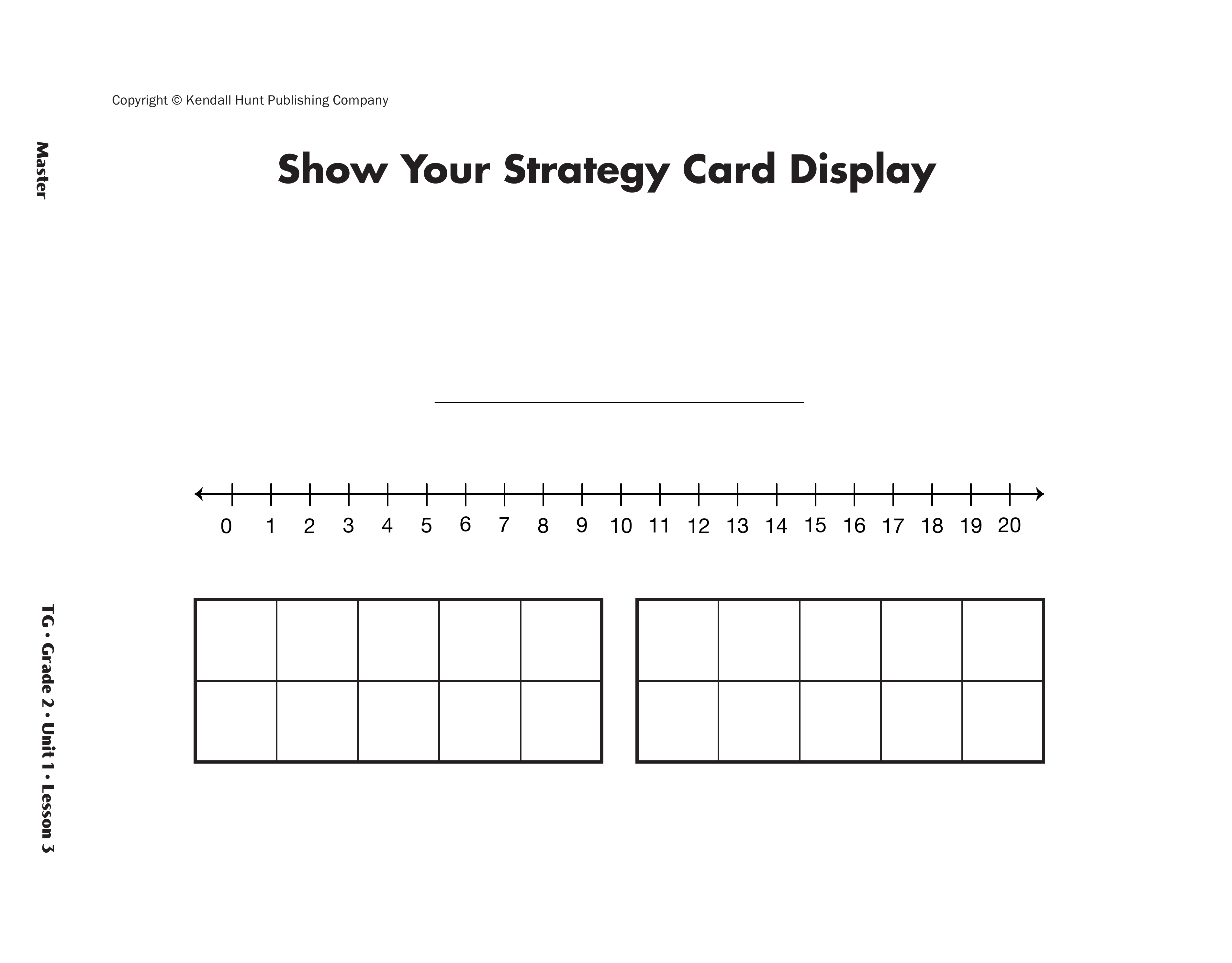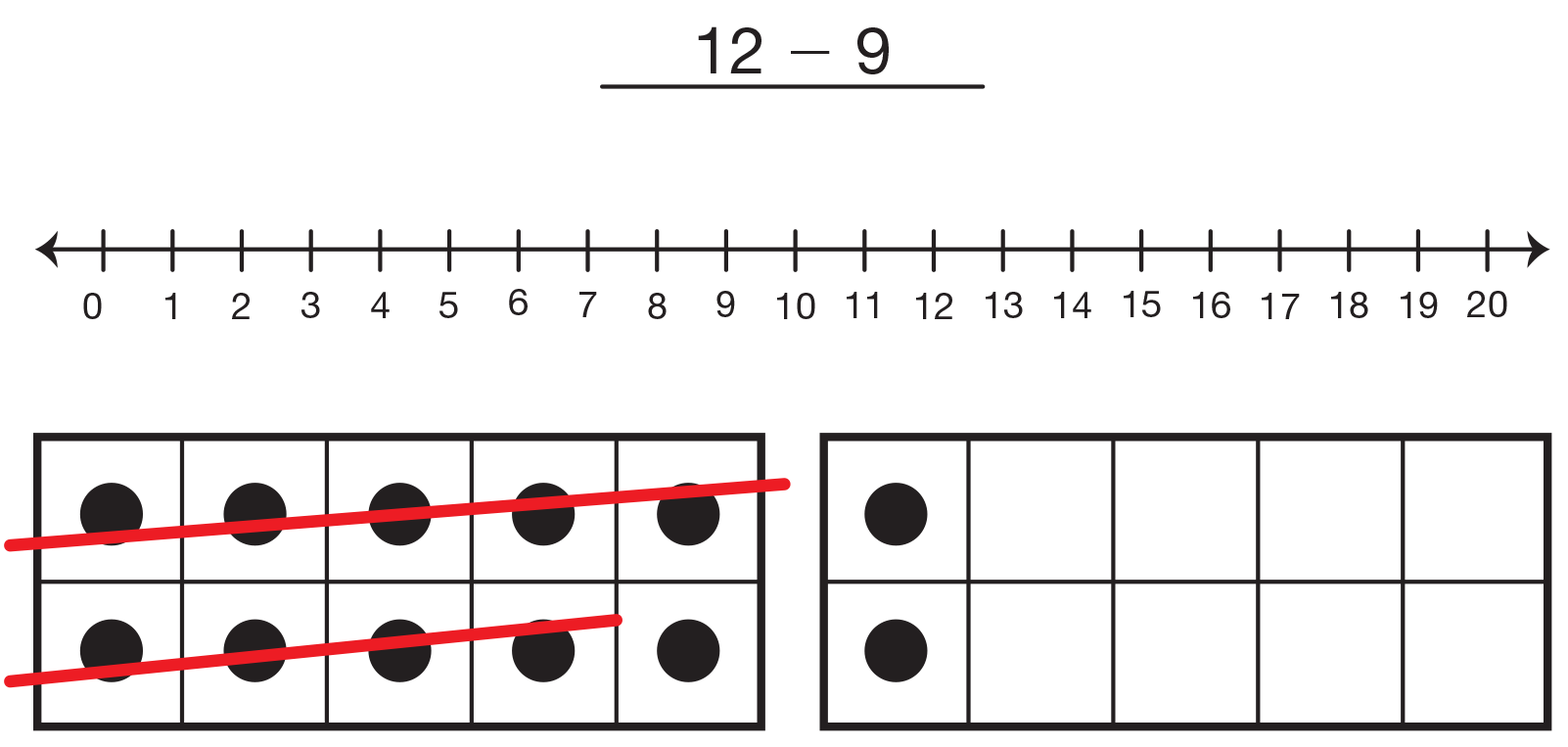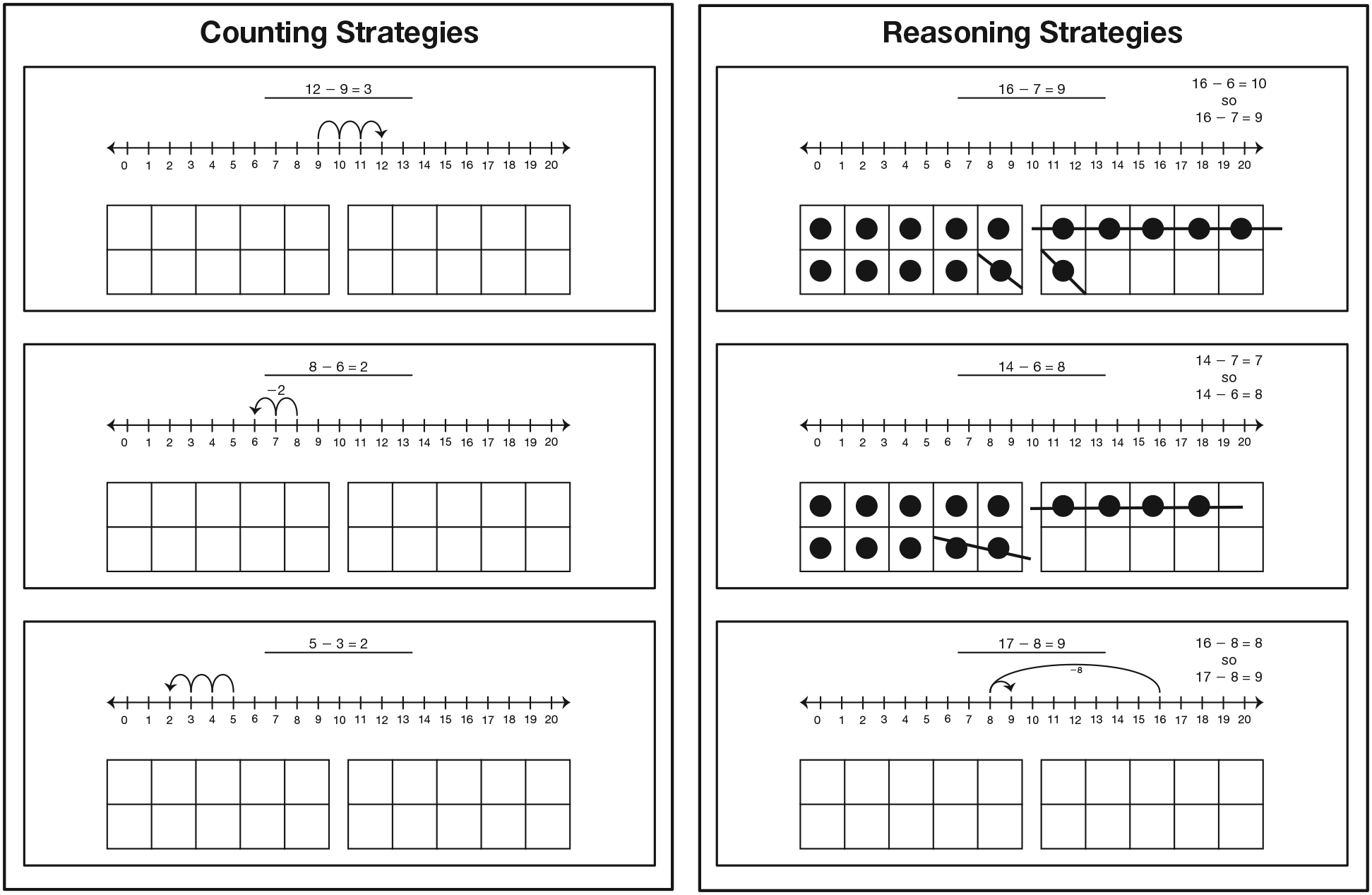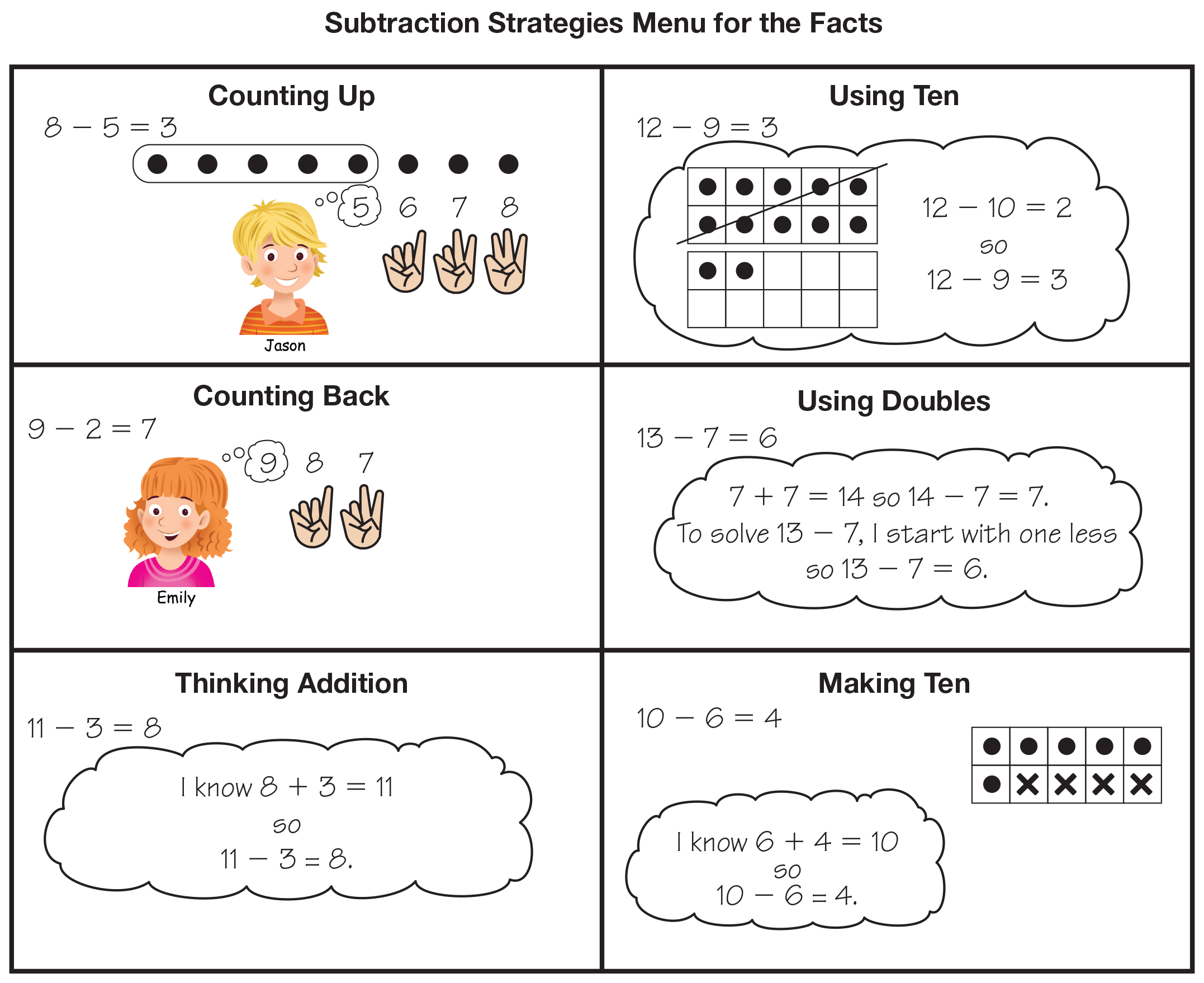Subtraction Strategies Seminar
Est. Class Sessions: 2Developing the Lesson
Part 1: Building a Subtraction Strategies Menu
Describe Strategies for Subtraction Facts. Tell students they are going to have a "strategy session" about subtraction similar to the one they had for addition in Lesson 3. Explain that they will solve problems within 20 and pay special attention to the strategies they use. Display the two sheets of chart paper and the Show Your Strategy Cards with the facts 12 − 9, 16 − 7, 8 − 6, 5 − 3, and 14 − 6. See Materials Preparation. Focus students' attention on the displayed cards and ask students to explain how to solve each problem.
Ask:
As students describe their thinking, ask them to show their thinking using the tools and space on the Show Your Strategy Cards Display Master. Have connecting cubes readily available as well. Then record that solution on the corresponding card you prepared. See Figure 3. Repeat this discussion for the other four facts displayed.
Introduce the Counting Strategies and the Reasoning Strategies charts.
Ask:
Post the Show Your Strategy Card on the appropriate chart. See Figure 4. Ask:
Encourage students to use efficient strategies. See the Sample Dialog to guide your discussion of subtraction strategies.
Next have students focus their attention on the Show Your Strategy Cards with the subtraction fact 16 – 7.
Ask:
Follow the same procedure for the remaining cards: 8 – 6, 5 – 3, and 14 – 6 and place the cards on the appropriate charts. Encourage students to use different strategies and tools to solve the remaining problems on the strategy cards.
Sort Subtraction Facts on Show Your Strategy Cards. Have students work in groups to discuss strategies for the remaining subtraction facts you prepared on the Show Your Strategy Cards. Give 4–5 facts to each group. As they finish, you may give them additional facts to solve. Ask each group to solve the subtraction facts and show their strategy with the number line, ten frames, a drawing, or with number sentences. As groups complete their cards, have them attach the cards to the chart that corresponds to the strategy that they used to solve the problem.
Ask:
Some students may have trouble naming their strategy. Allow students to place their card on the chart they think is appropriate. If they do not choose the appropriate chart, there will be a chance to rearrange the cards later.
Discuss Counting and Reasoning Strategies. Upon completion, direct students' attention to the subtraction facts on the Counting Strategies and Reasoning Strategies charts.
Ask:
Students may want to move some of the facts to the Reasoning Strategies chart. Direct students' attention to the facts on the Reasoning Strategies chart. Have a few students share their reasoning strategies.
Ask:
Compare to Subtraction Strategies Menu. Display and ask students to refer to the Subtraction Strategies Menu for the Facts in the Student Activity Book. See Figure 5. Ask students to compare the Subtraction Strategies Menu for the Facts to the strategies they collected on the charts.
Ask:
Have students add other strategies they think of to the back of the menu.



















